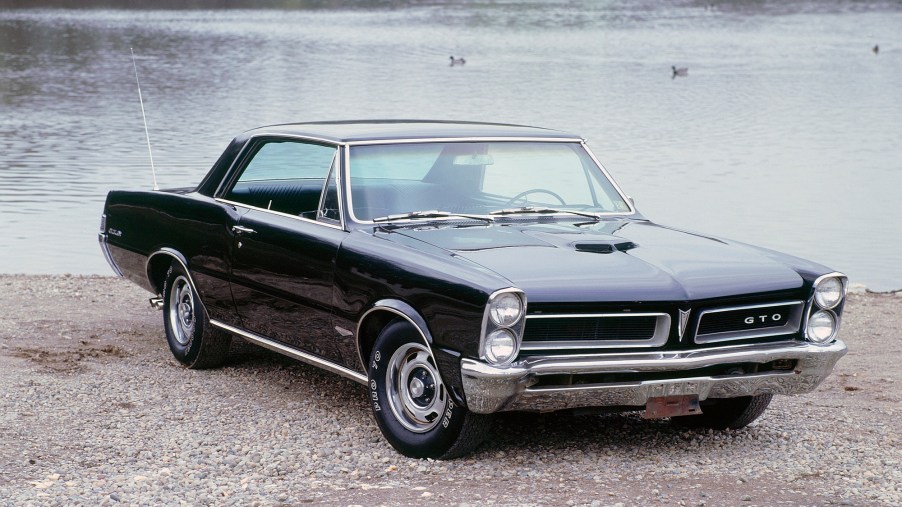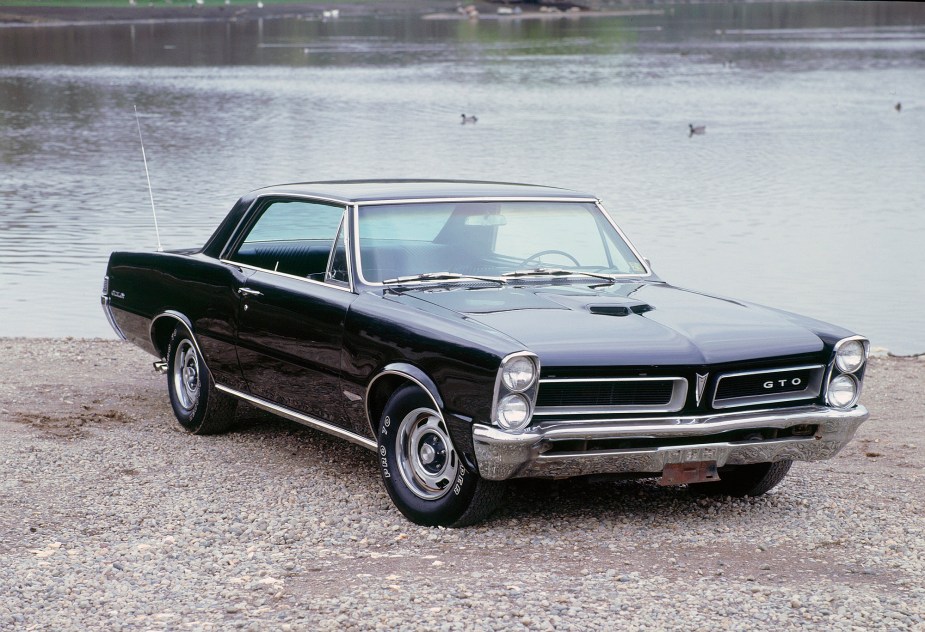
GTO: What Does It Stand For?
You’ve seen it on Pontiac muscle cars and Ferraris alike: “G-T-O.” It’s synonymous with American muscle culture, and, like an artist or poet, the Goat’s name is appreciated after it’s gone. Still, what does GTO stand for? Furthermore, why is it such a big deal for fans of the Pontiac GTO coupes and convertibles?
What does GTO stand for?
GTO stands for Gran Turismo Omologato, or “Grand Touring Homologated” in English. “GTH” just doesn’t have the same punch, though. Frankly, Pontiac’s beloved muscle car warranted a punchy Italian moniker. After all, many fans still call it the “Goat,” and Hagerty says enthusiasts insist that it stands for “Gas, Tires, and Oil.”

What kind of car is a GTO?
Aside from Ferrari’s tradition of producing cars like the 250 GTO, the Pontiac GTO is a muscle car, through and through. Even the most recent iterations are two-door, rear-wheel drive (RWD), V8-powered vehicles. The first cars were long, handsome coupes and convertibles. Also, they’re pretty collectible now.
If you want a 1966 model year example in good condition, you might have to pay around $60,300, depending on the engine, transmission, and factory air conditioning. Of course, not all GTOs are prohibitively expensive. Before Pontiac ceased operations, it made a sleeper-esque GTO that is quite the performance bargain.
What years did Pontiac make it?
Pontiac first unveiled the Goat for the 1964 model year. It was a big deal; U.S. News calls it the first muscle car. It certainly fits the bill; customers could snag a 1964 Pontiac GTO with a 389 cubic-inch V8 producing 325 horsepower. The cars got even prettier as the decade moved on, with the stacked-light front end of the 1965 and 1966 cars making a styling statement. Pontiac continued producing the cars through 1974, an era marred with a muscle car-killing oil crisis.
Of course, even cars like the 1969 Judge and its 370 horsepower couldn’t save the namesake from its malaise era end. However, General Motors brought the Pontiac muscle car back from the dead with the Australian Holden Monaro-based 2004 GTO. That car featured a 5.7L LS1 V8 producing 350 horsepower. Still, the car’s underwhelming styling contributed to its 2006 discontinuation before Pontiac closed its doors altogether in 2010.

Why is it called a Goat?
Ah, the Goat. Many fans think that the “Goat” moniker is in reference to the widely used acronym, “Greatest Of All Time.” However, Hagerty is adamant that the enthusiast’s use of the term concerns the letters GTO. Either way, autocorrect has certainly swapped many a GTO into G.O.A.T.
How much is a GTO?
Buying a classic GTO is pricey, with some earlier models demanding more than $100,000 for one in pristine condition. However, you can save some money by rebadging a Pontiac Lemans from the same era. For instance, Hagerty says you can snag a 1966 Pontiac Lemans with a 326 cubic-inch V8 in good condition for $16,500. However, the most affordable way to get into a fast GTO is to find an example from 2004 to 2006.
According to Kelley Blue Book (KBB), you can get a 2006 Pontiac GTO with a 6.0L V8 and 55,000 miles for around $18,418 from a private party. Scroll down to the following article to read more about muscle cars!



